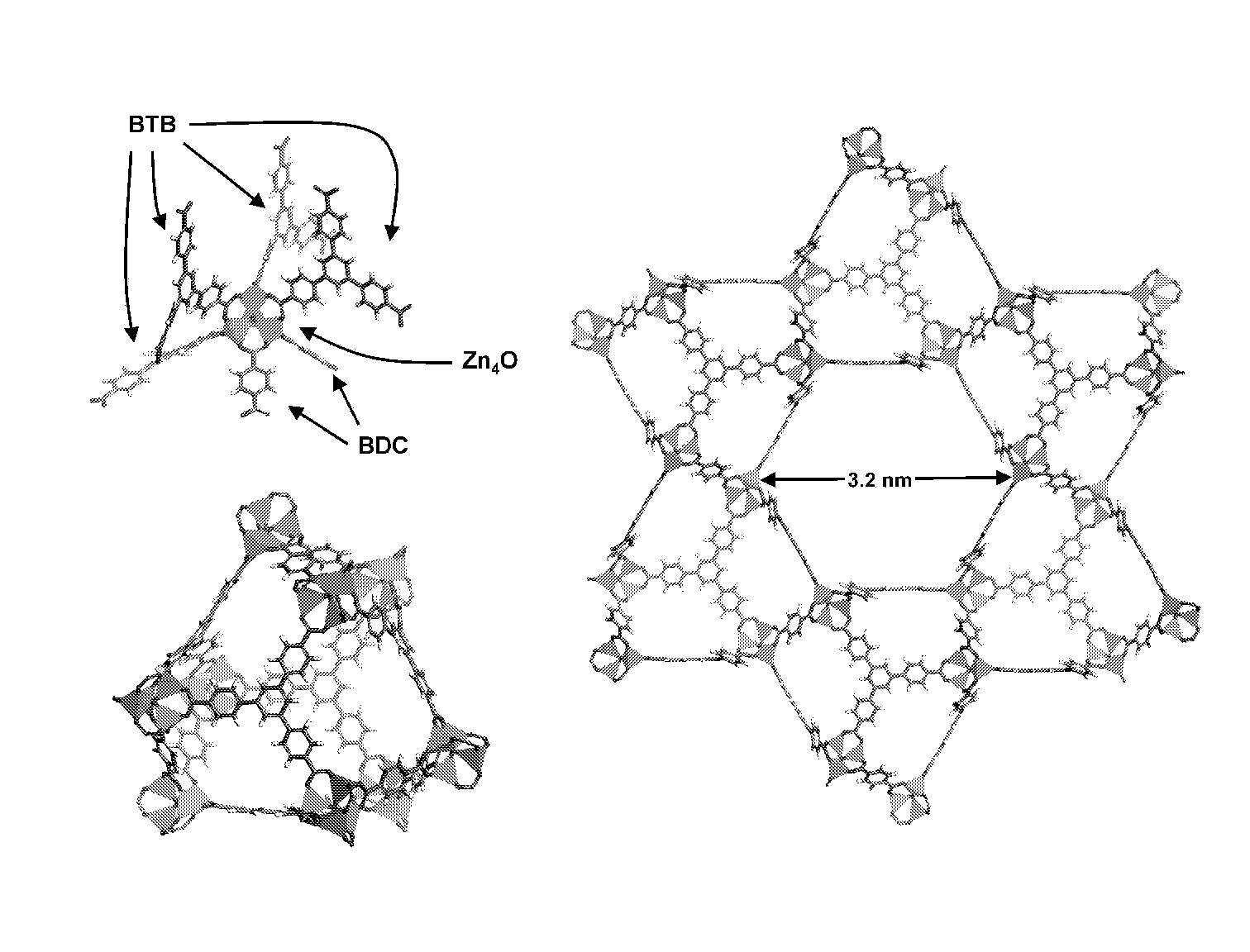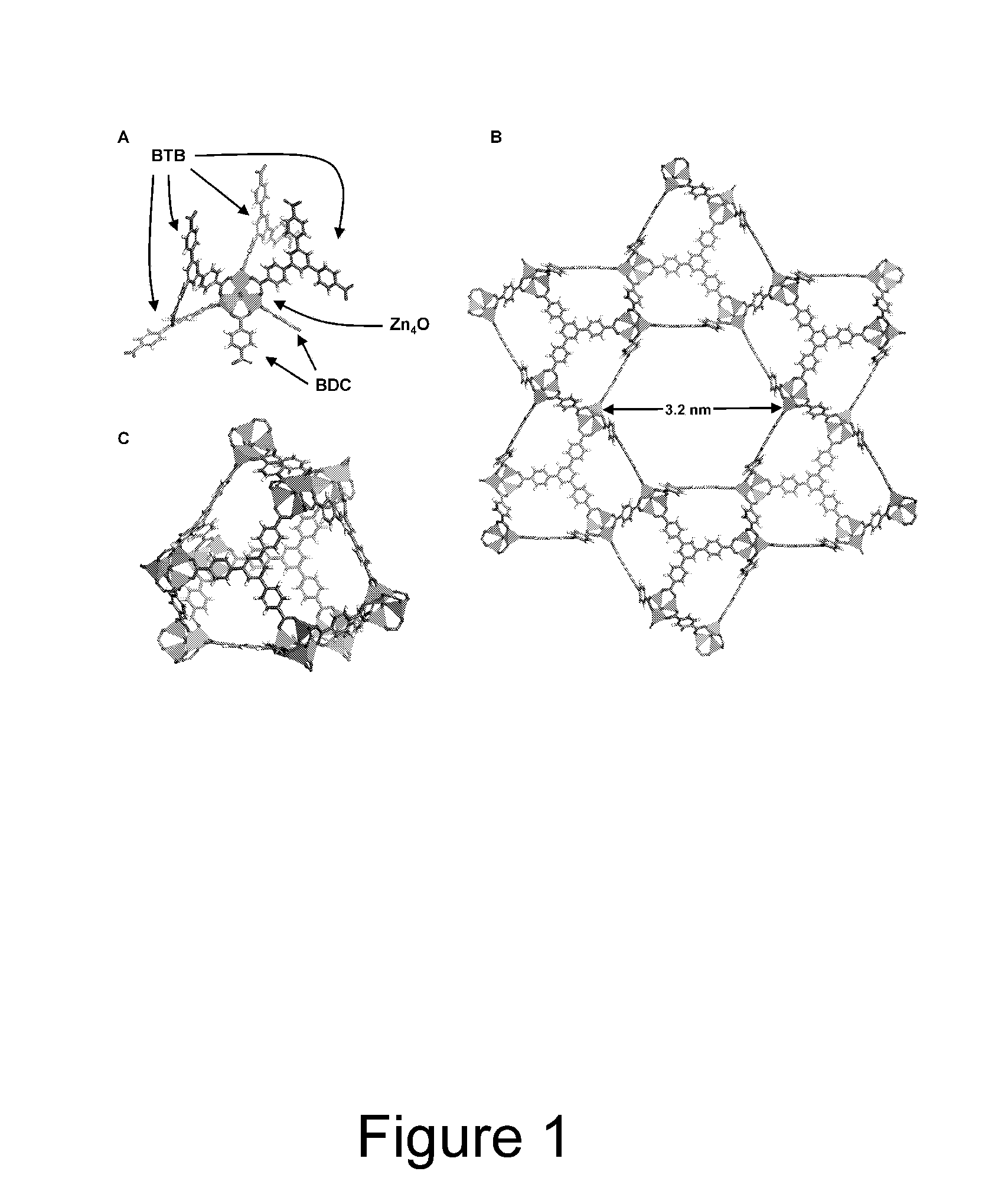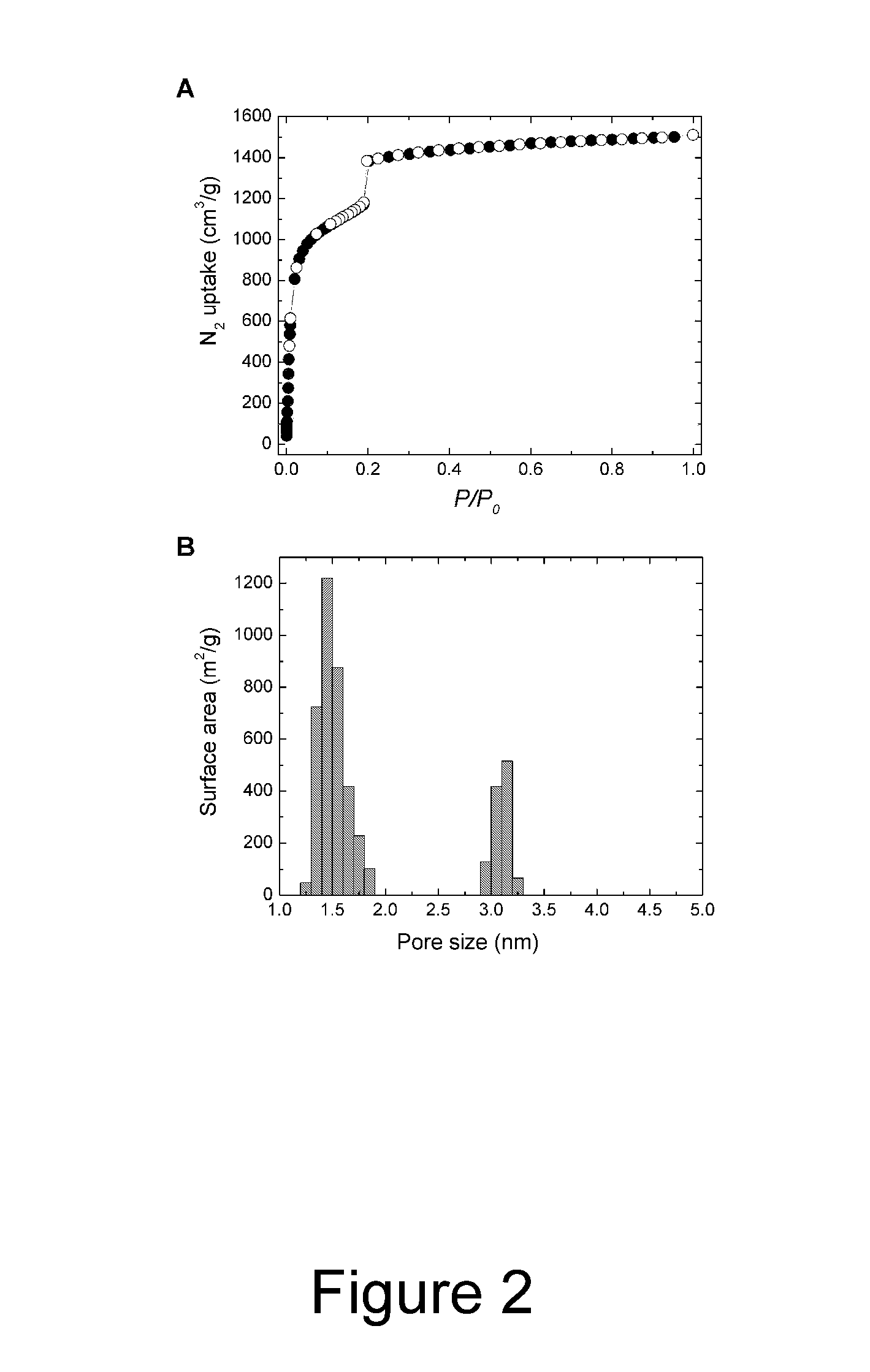Porous coordination copolymers and methods for their production
a technology of copolymer and copolymer, which is applied in the direction of organic compound/hydride/coordination complex catalyst, physical/chemical process catalyst, other chemical processes, etc., can solve the problems of reducing the synthesis efficiency of copolymer
- Summary
- Abstract
- Description
- Claims
- Application Information
AI Technical Summary
Benefits of technology
Problems solved by technology
Method used
Image
Examples
examples
1. Reaction of H2BDC and H3BTB
[0040]Porous crystals are produced by heating various ratios of H2BDC (1,4-benzenedicarboxylic acid) and H3BTB (1,3,5-tris(4-carboxyphenyl)benzene) in the presence of excess Zn(NO3)2.4H2O at 85° C. after 2 days. Three distinct crystalline phases are observed as the mole fraction of H3BTB is increased. At low H3BTB concentrations only MOF-5 crystals are formed, however at a mole ratio of 8:2 (H2BDC:H3BTB), a new needle-shaped phase is formed in the presence of MOF-5. Increasing the H3BTB concentration leads to exclusive formation of the needle-shaped phase that, by powder X-ray diffraction (XRD), is different from MOF-5 and MOF-177. A further increase of the H3BTB concentration results in MOF-177 forming as well. Finally, at H2BDC:H3BTB mole ratios ≧4:6, MOF-177 is the first product to crystallize out of solution.
[0041]A single crystal X-ray diffraction study of the needle-shaped crystals revealed a structure with one dimensional hexagonal channel. The p...
PUM
| Property | Measurement | Unit |
|---|---|---|
| length | aaaaa | aaaaa |
| pore size | aaaaa | aaaaa |
| temperature | aaaaa | aaaaa |
Abstract
Description
Claims
Application Information
 Login to View More
Login to View More - R&D
- Intellectual Property
- Life Sciences
- Materials
- Tech Scout
- Unparalleled Data Quality
- Higher Quality Content
- 60% Fewer Hallucinations
Browse by: Latest US Patents, China's latest patents, Technical Efficacy Thesaurus, Application Domain, Technology Topic, Popular Technical Reports.
© 2025 PatSnap. All rights reserved.Legal|Privacy policy|Modern Slavery Act Transparency Statement|Sitemap|About US| Contact US: help@patsnap.com



